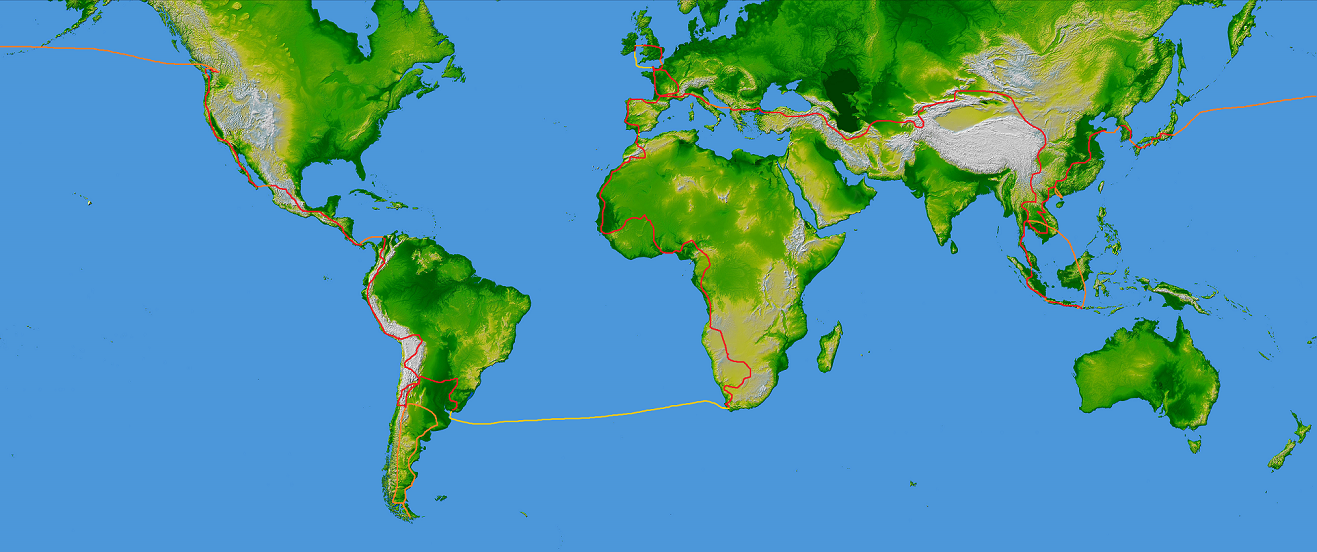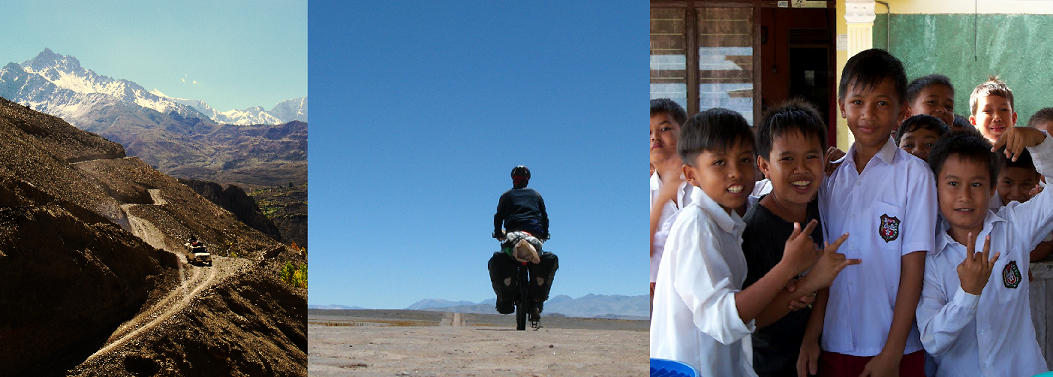Initially I was very impressed with my new cycling partner's grasp of the Spanish language. Following a very pleasant final night in Santander with
couchsurfing hosts, Belen and Manuel, Kirsty had demonstrated her proficiency in Spanish admirably well I thought. Having spent only three weeks in Cuba learning Spanish whilst cycling around the island, Kirsty now seemed sufficently qualified to lead me further along some Spanish roads and bring a hopeful ray of light to what remains for me, a linguistic desert. As the days wore on, however, I realised that key aspects of my daily routine had been completely overlooked in Kirsty's linguistic training and were simply beyond the scope of her Latin American Spanish phrasebook. At mealtimes it sufficed to establish that the meal I wanted had to have meat in it, after that it was a case of eagerly waiting to see what exactly I had ordered. Normally this wasn't much of a problem and a fried slice of some animal would duly arrive, but on one occasion in a little village called San Antolin, matters reached a head. Having spent the previous four days traversing the mightily impressive Cordillera Cantabrica and having been almost simultaneously frozen, soaked, and toasted, I was ready for some filling food. We found the only eatery that we had passed in the previous 50 km of Asturian wilderness and I sat down to a dinner of what turned out to be pig knuckle fat. With Kirsty unable to eat her own food due to her hysterical laughter, I tenderly sild my way through two of the knuckles before pushing my plate aside in a rare moment of gastronomic defeat.
Our slightly inland route westwards across northern Spain was quite spectacular, bringing us up, down, and along beautiful mountain valleys, and on occasion, past what must be some of the largest open-cast coal mines in Europe. My standard of living increased dramatically as 1-star hostals became the norm, although we'd probably have ended up as frozen corpses on a couple of occasions had we been testing the limits of our lightweight sleeping bags inside our tents. Santiago de Compostela marked the end of Kirsty's cycling foray, and she began the return pilgrimmage to Edinburgh by train and boat, while I continued south to Portugal.
In the six days it took to ride down the Portuguese coast to Lisbon, one of the stops I made was in the northern city of Porto. I was staying in a hostel there one night, having locked the door to the dormitory since it was after midnight and I had presumed that no one else was going to be turning up. I'd just fallen asleep when there was banging on the door. Bruno was from a small town on the opposite side of the country, near the Spanish border, and he entered the room with gusto, turning on lights, appearing in no way apologetic to have roused me from my much needed beauty sleep, and he proceeded into a one-way conversation at full throttle. He immediately started to warn me of the dangers that the unwary visitor faced in Porto and advised me to leave nothing on display as only last night had he had a pair of shorts and a t-shirt stolen. I cast my eye dubiously over my own scattered belongings and thought it highly unlikely that some drug crazed FC Porto fan was going to run away with my Borat-style padded lycra shorts. "One can only hope" I muttered, trying to feign tiredness and irritation at having been woken up so abruptly. Despite my attempted indifference, Bruno's life story unravelled before me - his exchange year in Poland, finding work in Portugal as a fledgling civil engineer, his country town, and his father's recurring nightmares. When he mentioned that the source of the nightmares was as a result of his father's experiences as a soldier in the Portuguese colonial army in Guinea Bissau, I became more engaged. One of the last imperial powers to release its African colonies (present day Mozambique, Angola, Cape Verde, São Tomé and Príncipe, and Guinea Bissau), I was interested to hear a Portuguese perspective on their colonial adventure. Independence for the colonies only occured after Portugal's own liberation from the dictatorship of Salazar in the early 1970s. Bruno hoped to work in Angola in a year or two as a civil engineer, but he had clearly inherited a depressing and skewed historical perspective. Regarded by many as one of the more brutal and destructive imperial powers, particularly in the period just prior to their departure, Bruno had apparently absorbed the colonial baggage as he said that the collapse and failure of the infrastracture and newly independent nations was clear evidence that the Africans did not know how to govern or main the infrastructure in their countries. Too tired to argue the point, I rolled over and went back to sleep.
I'll end this monologue with one other thought that has occured on the couple of hundred odd hours that I've been spending on my saddle over the past couple of months. Traveling by foot or on a bicycle or other such means, can help you appreciate how people can treat or view others based on first appearance. I remember passing through the industrial outskirts of Orleans several weeks back, when I saw a group of children from a nearby caravan encampment washing their clothes at a fire hydrant. The image resonated with me at the time, realising that what I regarded as the daily burden of washing my clothes by hand, if a suitable place can be found, was for these kids an everyday event. Another somewhat insightful moment occured when I was collapsing off the bike in the afternoon heat of a small coastal village in Portugal a couple of days ago. I was obviously looking the worse for wear, smeared with sweat, salt stains, and a congealed layer of sun screen, diesel fumes, and dust. I approached a passerby and in my best concoction of Portuguese, Spanish, French, and English, asked him for directions to the bread store. The man took one look at me and shaking his head and wagging his finger at me, walked resolutely on down the street. How many times I've seen similar jestures to others, yet although I was able to laugh it off, it was also a very disturbing sensation to be scorned in such a way. Of course, I can only relate on an extremely superficial level to others who experience such moments on a daily basis, but perhaps it's one good reason to get down and dirty on a bicycle.
Lisboa, Portugal
Trip distance: 3545 km


